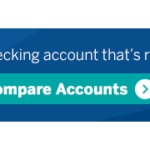Checks and the people who still use them
Over the years, my life has gotten increasingly digital, without me even realizing it. Take for instance, payments. Typically, I pull out a debit or credit card to pay for store purchases. Online bill pay works for the monthly bills. And for splitting dinner bills, classroom payments, sports fees and babysitters, P2P does just fine.

Recently though, one of my weekly service providers requested that I write them a check. Given that this person was under the age of 25, I was a bit taken aback. A check? At her age? Surely she wasn’t the norm. Or was she? It made me wonder. Just how common are checks?
As it turns out, while checks have declined over the years - in 2013, the Federal Reserve Payments Study showed check payments declining from the high 30 billion range down to 19.7 billion over the previous ten years - in 2017, the same study showed a more moderate decline of just 0.8 billion annually. Checks, it seems, may be on their way out, but it’s possible their demise is not imminent.
So, why do people still use checks?
According to Google, it would seem there are a variety of reasons checks are still a prevalent form of payment.
For one, there are some businesses that don’t accept credit or debit cards, due to the costs associated with processing these payments. And there are still others - like the teenager down the street who mows your lawn - that aren’t set up to be a merchant. And still more, like your landlord, that only accept checks for payment. For these, cash or checks are the only way to pay.
Second, for all its seeming ubiquity, there is still a population of people who do not use the internet. For them, paying bills with a check, instead of online bill pay or via debit or credit card, may be the best - and only - option.
Checks also allow some ability to follow the funds. Once the check you’ve written clears, your bank will have a copy of the canceled check, or even an image of it that you can see in your online banking. This helps you both track your spending and know precisely when your payment has been made.
Finally, if you’ve ever wondered about the makeup of checks, specifically, what those 21 digits in odd typeface on the bottom of your checks mean, click here to read the aptly titled “What are all those numbers on the bottom of your checks and why do you need them?”
Oh, and it turns out my under 25 year old service provider doesn’t have it so wrong. According to Qualtrics, 42% of millennials still write checks, which is a higher percent than own video game consoles (34%).
Fortnite might not be hot, but apparently putting pen to paper still is. Who knew?
For more on BBVA Compass checking account options, click here.
